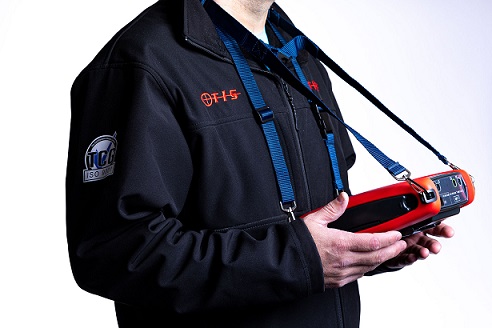A primary objective of electrical testing is to determine the safety of an electrical installation. Earth loop impedance testing, or loop testing as it is often shortened to, is a good example of this.
What is loop testing?
Loop testing is a safety test to ensure that fuses and circuit breakers installed in a system will still operate if a fault occurs. Where a fault occurs in an electrical installation, a loop impedance test will verify that sufficient current can flow to operate the fuses or circuit breakers protecting the circuit that is faulty and crucially, that they can be operate within a specified time. This essentially ensures that when a fault occurs, a circuit can be disconnected fast enough to prevent it overheating and potentially causing a fire, injury or electric shock.
So a loop test means that every circuit is tested to ensure the actual loop impedance doesn’t exceed that specified for the protective device installed in that particular circuit.
Loop testing is important to businesses for safety reasons in terms of protecting their people, buildings and assets and for public liability, but it is also important for business continuity and insurance reasons.
How is loop testing regulated?
Current regulations require that two loop impedance tests are carried out. These are:
Ze – External fault loop impedance – typically measured at the distribution board where an electrical supply enters a building
Zs – Total system fault loop impedance – a separate test for each circuit at a location furthest away from the point of supply
The limits for these tests are specified in the standard BS 7671. The measured earth fault loop impedance of a circuit should not be greater than 80% of the relevant limit specified in BS 7671. If this is the case, the impedance should be low enough under earth fault conditions to meet the BS 7671 limits, and therefore should mean that protective devices will still automatically disconnect the circuit (ie. operate correctly) within a specified time of a fault occurring.
How to test for loop impedance with a multi-function tester
You can use a dedicated loop impedance tester to carry out these tests, but it is most popular now to use the loop impedance function of a multi-function tester, because electrical testers prefer to use an instrument with multiple functions to aid convenience and efficiency of testing. The MFT-Pro supplied by Test Instrument Solutions is a great example of this.
It is recommended that the Ze test is carried out first, following all working live safety requirements:
- Select the Earth Fault Loop test option on the MFT-Pro
- Locate the incoming supply side of the installation
- Connect one test lead to the live terminal
- Connect the second test lead to the neutral terminal
- Connect the third test lead to the incoming earth conductor
- Press TEST on the MFT-Pro and record the Ze value, which should be a low reading in ohms.
The maximum Zs value is determined using the equation where Zs = Ze + R1 + R2, and where R1 and R2 are the sum of resistance of the Live and Earth for each tested circuit.
So the Zs test should involve:
- Locate the furthest point on the circuit to be tested, which could be a socket for example
- Select the Earth Fault Loop test
- Connect the test leads to live, neutral and earth
- Measure and record the results. Note also that if the circuit is RCD-protected, you should select the ‘no trip’ function on the MFT-Pro to avoid nuisance tripping of the RCD.
- Obtain the Zs value for each circuit where this is the sum of the resistances according to the above formula.
- Verify the Zs values are within the accepted limits of BS 7671.
Please note that this section is for information purposes only. Anyone using equipment referred to in this section must be suitably qualified and/or experienced within the respective field. If in doubt before use, please consult a qualified electrician or engineer & thoroughly read all instruction booklets.